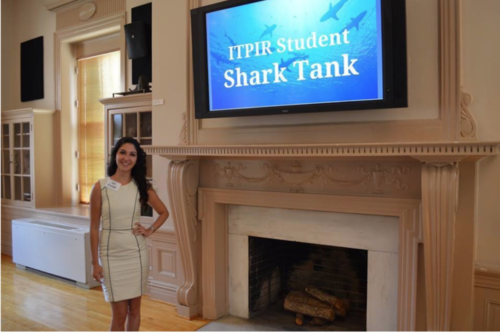Could a Program that Instills an Interest in Science Contribute to the Achievement Gap? by Ahmed Khoker
Over the past few days, the students in our Education 400 class went on a trip to Washington D.C. with our professor, Drew Stelljes, to see public education in practice. We got the opportunity to meet with administrators, teachers, students, policy makers, and William and Mary alumni involved with public education.
Going into the trip, I didn’t really know what to expect. I tried to come in with an open mind and just observe and learn as much as possible. I also kept in mind that what I was seeing was just a snap shot of the very dynamic public education system.
As I observed effective teachers in the classroom and talked to so many students who really had the desire to learn, a lightbulb lit up in my brain and I knew that teaching was the profession for me. Still, I saw teachers who were in my shoes not too long ago, and many seemed to be exhausted and unsure of their futures in education after only a couple of years. To say that this was discouraging and disheartening would be an understatement. How did this happen to some of the bright and motivated teachers in the profession? The only clear answer I got was that it was anything BUT the children. This was enough to reassure me that I will have a hopeful, bright future as a teacher, regardless of the obstacles along the way.
Aside from seeing effective teachers in action, the part of the trip that impacted me most was the visit to Curiosity Zone, which was a place where children could go as early as age 2 for hands on science learning. The purpose of the program was to encourage children to explore their love for science through hands-on learning. Although I did not have the opportunity to observe a class, the idea of the program seemed well thought out and promising. We had a question and answer session with the education director as well as the founder of Curiosity Zone. The education director seemed to really understand some of the limits of curriculum development in public schools, and she implemented innovative ideas for science curriculum without the restrictions that public school teachers face.
During the trip, I had some interesting conversations with all of the extremely bright, engaged, and determined students in our class. Specifically, the conversations about Curiosity Zone really made think about the issues that are being ignored in public education. The question was posed: Do programs like Curiosity Zone perpetuate the widening of the achievement gap? It seemed like a very simple answer to me. How could a program that instills an interest in science into children of all ages contribute to the achievement gap? Some suggested that since the program was only available to students in a very wealthy county (Loudoun) and because it cost money, it would only help those who are already destined to be high achievers.
This really made me wonder: Are we approaching the problem of the achievement gap in the wrong way? I believe the achievement gap is not only between high achievers and low achievers in the United States, but also between the students in the United States and those in other countries. The best of the best in the United States are still not competing with those in other developed countries. Even if programs like Curiosity Zone only serve high achieving students, which isn’t necessarily the case, it would still have an impact on the achievement gap between the US and other countries. It would help high achieving students reach their full potential. I strongly believe that the effort to close the achievement gap will affect high achievers, low achievers, and those in the middle. I believe that the goal of a public education system should be to allow ALL students to reach their highest potential, which will inevitably vary depending on numerous factors. Programs like Curiosity Zone are not contributing to the root causes of the achievement gap. A public education system based on standardized testing does have a huge impact on all students, not just those on the lower end of the achievement spectrum, and this is largely being ignored. Our conversation about Curiosity Zone was one of many intellectually stimulating discussions we had during the trip.
By the end of the trip, I was filled with more mixed emotions than ever before. I was hopeful about the future of public education but humbled by the daunting task that lay ahead. I was angry about the issues that were being ignored in public education, yet inspired and impressed by what is already being done. For the first time, I was certain about what I wanted to do with my life but still so uncertain about the support system or lack thereof for teachers in many schools. I told myself that I could make a significant difference as a teacher in the future, but as I observed teachers at Anacostia high school and Maury Elementary school, I also asked myself, “If these amazing people were part of a failing public education system, what could I possibly do?” After having dinner with some outstanding W&M alumni, many of which had been in our shoes only a few years go, I realized that this balance between certainty and uncertainty was not only okay, but it was crucial to maintain throughout my life. To make a difference, we have to challenge our own views as well as those of others and stay open minded. The achievement gap will only close if we attack it from every angle. Teachers, administrators, policy makers, parents, and students must all work towards the goal. Everyone has a stake in
public education and the future of this country.




No comments.
Comments are currently closed. Comments are closed on all posts older than one year, and for those in our archive.